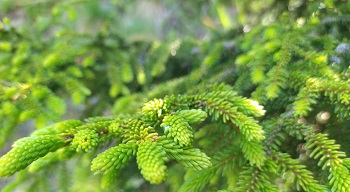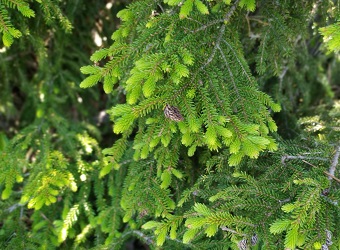Can Spruce Trees Grow in Japan?
In which climate do spruce trees grow well? It likes humid weather, deep, high ventilation capacity, high moisture content, sandy and loamy, nutrient-rich, humus cool soils. It grows very well in such places. Is spruce resistant to cold? Whatever the season, growing blue spruce is not for the faint-hearted: Unlike cold-hardy indoor plants, blue spruce, which requires its own special, large space and one-to-one contact with the soil, reaches ideal growing conditions between 2-7 degrees Celsius.
Does the spruce tree like water? Watering Spruce trees like the soil to be constantly moist but are sensitive to puddles. Spruce trees can grow in Japan. Japan has a diverse climate, and certain species of spruce are well-suited to its conditions. Spruce trees are typically found in the northern regions of Japan where the climate is colder and more suitable for their growth.
One common species of spruce that can be found in Japan is the Sakhalin spruce (Picea glehnii), also known as the Yezo spruce. It is native to Hokkaido, the northernmost island of Japan. The Sakhalin spruce is well-adapted to cold climates and can withstand harsh winter conditions.
Other spruce species, such as the Norway spruce (Picea abies) and the Colorado spruce (Picea pungens), may also be cultivated in certain regions of Japan where the climate allows. These trees are often planted in parks, gardens, and ornamental landscapes.
It’s important to note that while spruce trees can grow in Japan, their distribution and suitability may vary depending on the specific region and climate within the country. Factors such as temperature, precipitation, and elevation can impact the successful growth of spruce trees in different areas.
Are Spruce trees common in Japan?
Spruce trees are not as common in Japan as some other tree species. While certain species of spruce can be found in Japan, they are not as widespread as native tree species or other commonly planted trees.

In Japan, native tree species such as Japanese cedar (Cryptomeria japonica), Japanese cypress (Chamaecyparis obtusa), and various species of pine (Pinus spp.) are more prevalent and widely planted. These trees are better adapted to the local climate and have been traditionally used in forestry, landscaping, and construction.
However, spruce trees can still be found in certain areas of Japan, particularly in the northern regions where the climate is colder and more conducive to their growth. They are often seen in parks, gardens, arboretums, and other controlled environments where specific tree species are cultivated for their aesthetic or research purposes.
While spruce trees may not be as common as some other tree species in Japan, their presence can still be appreciated in certain locations where they are intentionally planted or naturally occurring in suitable habitats.
Do climax trees grow in forests in the mountains of Japan?
Yes, climax trees do grow in forests in the mountains of Japan. Climax trees are species that are well-adapted to the specific environmental conditions of an area and tend to dominate the later stages of ecological succession in a particular ecosystem. In the mountainous regions of Japan, various climax tree species can be found.

In the subalpine and alpine zones of Japan’s mountain ranges, such as the Japan Alps and the mountains of Hokkaido, several climax tree species are present. These include species like the Japanese stone pine (Pinus pumila), dwarf stone pine (Pinus pumila var. koraensis), and various species of spruce (Picea spp.), fir (Abies spp.), and larch (Larix spp.).
In lower elevations of the mountains, species like the Japanese beech (Fagus crenata) and Japanese oak (Quercus crispula) are commonly found as climax trees. These species often dominate the mature forests in their respective altitudinal zones.
It’s important to note that the composition of climax trees can vary depending on factors such as elevation, soil conditions, and climate. Different regions within the mountainous areas of Japan may have different dominant tree species based on these factors. Additionally, human activities and disturbances can influence the composition and structure of forests, including the presence of climax tree species.
Where in Japan are spruce trees best grown?
Spruce trees generally grow best in the northern regions of Japan, particularly in Hokkaido, the northernmost island. Hokkaido’s climate is cooler and more suitable for the growth of spruce trees compared to other parts of the country. The following areas in Hokkaido are known for their favorable conditions for spruce tree growth:
- Daisetsuzan National Park: Located in the center of Hokkaido, Daisetsuzan National Park is known for its vast wilderness and rugged mountains. Spruce trees, including the Sakhalin spruce (Picea glehnii), can be found in the subalpine and alpine regions of the park.
- Shiretoko National Park: Situated in eastern Hokkaido, Shiretoko National Park is a UNESCO World Heritage site known for its pristine nature and diverse wildlife. Spruce trees, along with other coniferous species, are part of the park’s forest ecosystem.
- Akan-Mashu National Park: Located in eastern Hokkaido, Akan-Mashu National Park encompasses several volcanic lakes and scenic landscapes. Spruce trees, such as the Sakhalin spruce, can be found in the forests surrounding Lake Akan and Lake Mashu.
- Furano and Biei: These regions in central Hokkaido are famous for their picturesque landscapes, including fields of flowers and rolling hills. Spruce trees are often planted in these areas for their ornamental value, contributing to the aesthetic beauty of the landscapes.
It’s worth noting that while spruce trees thrive in Hokkaido, their distribution and suitability may vary within the region based on factors such as elevation, soil conditions, and microclimates. The northern parts of Honshu, the main island of Japan, may also support the growth of spruce trees in certain suitable habitats. Where are spruce trees best grown in Japan? >>





